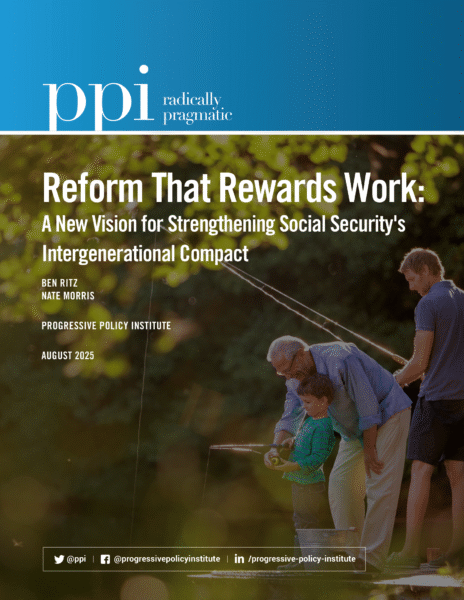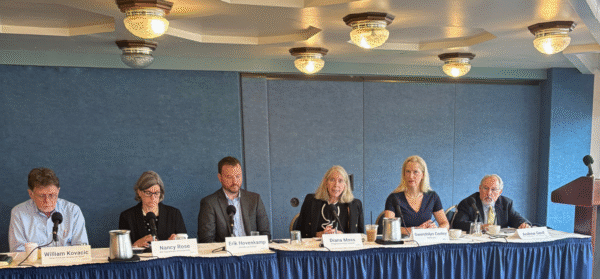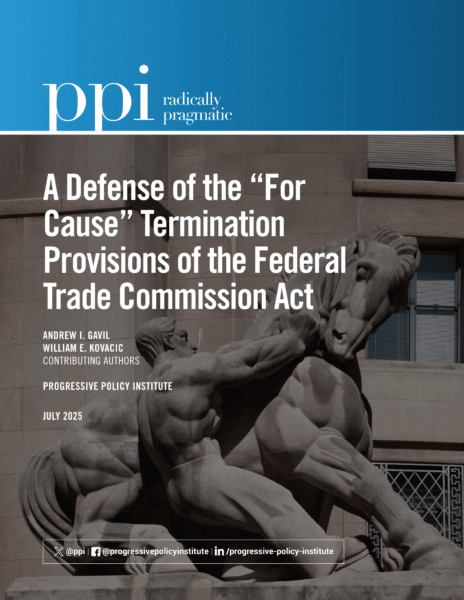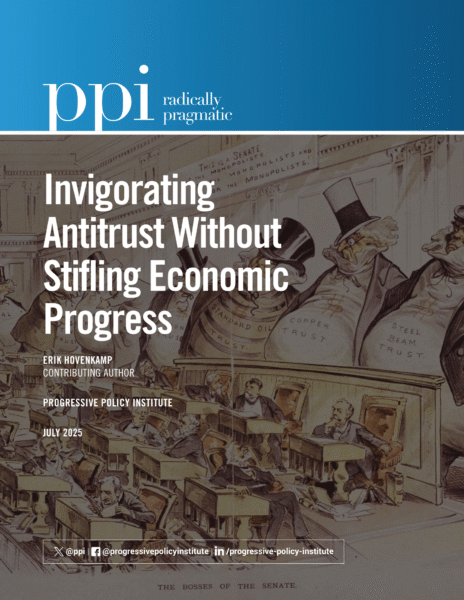For 90 years, Social Security has served as the foundation upon which people plan for retirement in the United States. But changing demographics and decades of policy mistakes have put this vital program on unstable financial footing. Just seven years from now — before the end of the next president’s term — the program will face a crisis if no action is taken. Policymakers are running out of time to prevent disaster and give Americans the retirement security they deserve.
At its conception, Social Security was designed to be an “earned benefit” — workers pay a dedicated payroll tax on wages up to a certain level, and once these workers reach retirement age, they receive benefits to replace some fraction of the wages upon which they were taxed. The benefit formula is progressive in the sense that workers with lower incomes receive a higher replacement rate for the wages on which they paid payroll taxes, but people with higher lifetime earnings ultimately receive higher benefits. To reinforce the link between contributions and benefits, an internal “trust fund” was established to ensure that spending on benefits would track payroll taxes over time.
But this structure has broken down due to a combination of demographic and policy changes, and Social Security now spends significantly more than it raises in revenue each year. The program’s trust fund system allows Social Security to temporarily run deficits commensurate with the savings generated by past surpluses. But in 2032, Social Security’s Old Age and Survivor Insurance (OASI) trust fund is projected to be depleted, and benefits will be automatically cut by 24% to match the program’s incoming revenues. Even if lawmakers were to combine the OASI fund with Social Security’s Disability Insurance fund, they would only delay insolvency by less than two years.
The prospect of such a steep and sudden benefit cut makes it difficult for current workers to plan for retirement and risks throwing vulnerable seniors into poverty. But simply continuing to fund scheduled benefits without any changes, whether by raising payroll taxes or by borrowing money to finance Social Security’s deficits, would impose an unfair burden on working Americans to solve a problem they did not create.
Unfortunately, today’s policymakers are not only failing to solve this problem — they are actively making it worse. Recent legislation has increased Social Security’s shortfall through unfunded benefit expansions and tax cuts, both moving up the date of insolvency and increasing the size of automatic cuts that will happen when that occurs. The most popular proposals in Congress for “addressing” Social Security’s insolvency rely on gimmicks that would strain the link between contributions and benefits while exposing the federal budget to massive fiscal risk.
If policymakers are unable or unwilling to make the current Social Security system sustainable in a way that’s consistent with its founding principles, then now is the time to reimagine it from the ground up. PPI believes that lawmakers should take this opportunity to reassess Social Security’s structure and build a new model that is fairer, more pro-work, and more sustainable for the future.
Through a groundbreaking new formula developed by PPI, we propose that Social Security award benefits based on the number of years someone worked, rather than their lifetime earnings. This innovative structure cements Social Security’s status as an “earned benefit” but is far more progressive and affordable than the current formula. A low-income worker and their higher-earning boss would get the same benefit if they put in the same amount of work, and anyone who works for at least 20 years would receive a benefit that keeps them out of poverty. Parents would also receive up to five years of credit for caregiving to reflect both their hard work and their contributions to future Social Security solvency.
Our comprehensive package of benefit reforms also makes a number of other changes to improve the fairness and sustainability of Social Security spending. We propose increasing Social Security’s retirement ages to keep pace with rising life expectancies, while preserving a special early retirement age for lower-earning workers, who have not experienced the same gains in longevity. We would change cost-of-living adjustments to more accurately reflect inflation but boost benefits for the oldest beneficiaries who are most at risk of outliving their savings. We would reform spousal and survivor benefits to better protect widow(er)s from falling into poverty. And we would make the recently passed “Social Security Fairness Act” live up to its name with fair treatment of people who work both in and out of the public sector.
Under PPI’s plan, beneficiaries in the top fifth of the lifetime earnings distribution would absorb cuts relative to the current formula that are, on average, comparable to the ones already slated to occur under current law. At the same time, the majority of beneficiaries would see no reduction in their monthly benefit, and many low-income or long-career workers would even receive greater benefits than they could receive under the current formula. Altogether, PPI’s proposed reforms would close half of the program’s shortfall over the next 30 years through benefit changes while reducing old-age poverty.
PPI would close the remainder of Social Security’s shortfall through new revenue. Under the current system, in which benefits are based on a worker’s contributions, the only structurally coherent way to raise revenue is by increasing the payroll tax. But the payroll tax is regressive and depresses the wages of working Americans. By transitioning to a system that awards benefits based on years of work rather than tax contributions, there is an opportunity to transition to a more progressive and economically efficient funding structure.
PPI’s framework proposes comprehensive changes to federal payroll and income taxes paired with broad-based consumption taxes that spread the cost of fixing the nation’s fiscal challenges fairly among all Americans. We would also reform the use of trust-fund accounting to prevent structural deficits from threatening to impose another big benefits cliff in the future.
Taken together, the proposals in this blueprint offer a robust framework for radically pragmatic Social Security reform that is both generationally and politically balanced. PPI realizes that any plan that reduces scheduled benefits or increases taxes on anyone but the ultra-rich will nevertheless be politically challenging to enact. The mathematical reality, however, is that any plan to rescue Social Security will require some combination of these difficult choices. And the longer policymakers wait to admit this, the more painful the solutions will become. Now is the time to address Social Security’s shortfall in a thoughtful way that is fair to working Americans and retirees alike, giving both groups retirement security they can depend on.
Read the full report.









